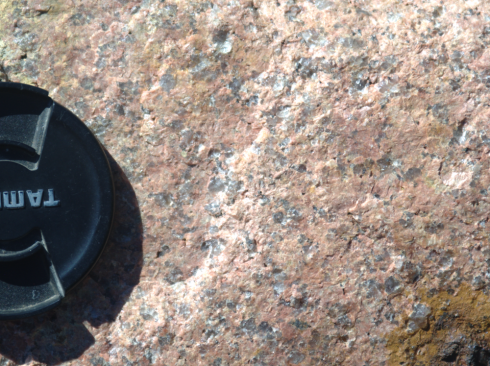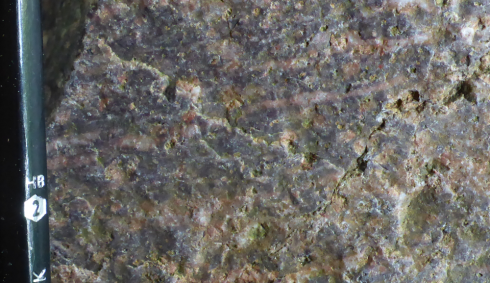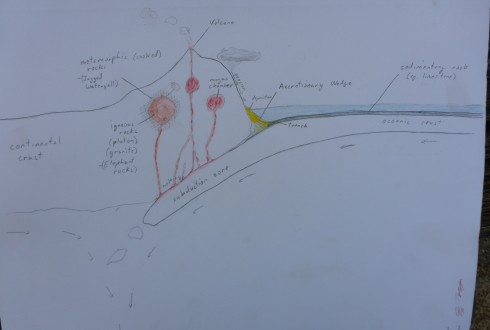On this year’s trip to the Current River with the Middle School we were able to see outcrops of the three major types of rocks: igneous, metamorphic, and sedimentary.
Igneous Rocks

We stopped by Elephant Rocks State Park on the way down to the river to check out the gorgeous pink granite that makes up the large boulders. The coarse grains of quartz (translucent) interbedded with the pink orthoclase crystals make for an excellent example of a slow-cooling igneous rock.
Metamorphic Rocks

On the second day out on the canoes we clambered up the rocks in the Prairie Creek valley to see jump into the small waterfall pool. The rocks turned out to look a lot like the granite of Elephant Rocks if the large crystals had been heated up and deformed plastically. This initial stage of the transformation allowed me to talk about metamorphic rocks althought we’ll see some much more typical samples when we get back to the classroom.

Sedimentary Rocks

We visited a limestone cave on the third day, although we’ve been canoeing through a lot of limestone for on the previous two days. This allowed us to talk about sedimentary rocks: their formation in the ocean and then uplift via tectonic collisions.
The Rock Cycle

Back at camp, we summarized what we saw with a discussion of the rock cycle, using a convergent plate margin as an example. Note: sleeping mats turned out to be excellent models for converging tectonic plates.
Note to self: It might make sense to add extra time at the beginning and end of the trip to do some more geology stops. Johnson Shut-Inns State Park is between Elephant Rocks and Eminence, and we saw a lot of interesting sedimentary outcrops on the way back to school as we headed up to Rolla.